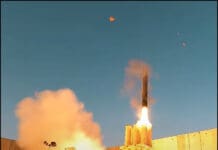This post is also available in:
 עברית (Hebrew)
עברית (Hebrew)
General Atomics has announced the production of the first EagleEye multi-mode radar to be used by the US Army. This development represents a significant upgrade to the Army’s unmanned systems, enhancing their operational capabilities with state-of-the-art technology.
The EagleEye radar system offers high-resolution, photographic-quality imagery that remains effective under various challenging atmospheric conditions, including clouds, rain, dust, smoke, and fog. This advanced radar is designed to be a “drop-in” enhancement for the current Gray Eagle Extended Range Unmanned Aircraft Systems (UAS) and will also be featured in its new iteration.
The EagleEye radar provides enhanced range and multi-mode performance, crucial for the deep sensing required in Multi-Domain Operations (MDO). Additionally, the radar incorporates a new Active Electronically Scanned Array (AESA) antenna and upgraded software that significantly boosts its range and mode versatility. This enhancement allows the aircraft to operate well beyond the reach of most threat systems’ Weapons Effects Zones, improving survivability and supporting long-range sensor operations.
The radar features Synthetic Aperture Radar (SAR) technology, enabling detailed observation through conditions that might obscure visual sensors. Notably, for the first time on the Gray Eagle platform, EagleEye includes radar-based Full-Motion Video (FMV) capability, which allows live tracking of moving targets even under heavy cloud cover.
The radar system also benefits from real-time Machine Learning software onboard, which enhances target detection, analysis, and operational efficiency. It provides Moving Target Indication (MTI), detects changes, generates stripmaps, and delivers detailed insights to analysts, commanders, and operators. The Maritime Wide Area Search (MWAS) mode further supports maritime reconnaissance and targeting.
Replacing earlier models of antennas with solid-state, all-electronic AESA antennas, the EagleEye radar is more reliable and can be more easily repaired. The new antennas have the potential of doubling the radar’s operational range, making it a key component for deep sensing in Multi-Domain Operations.


























